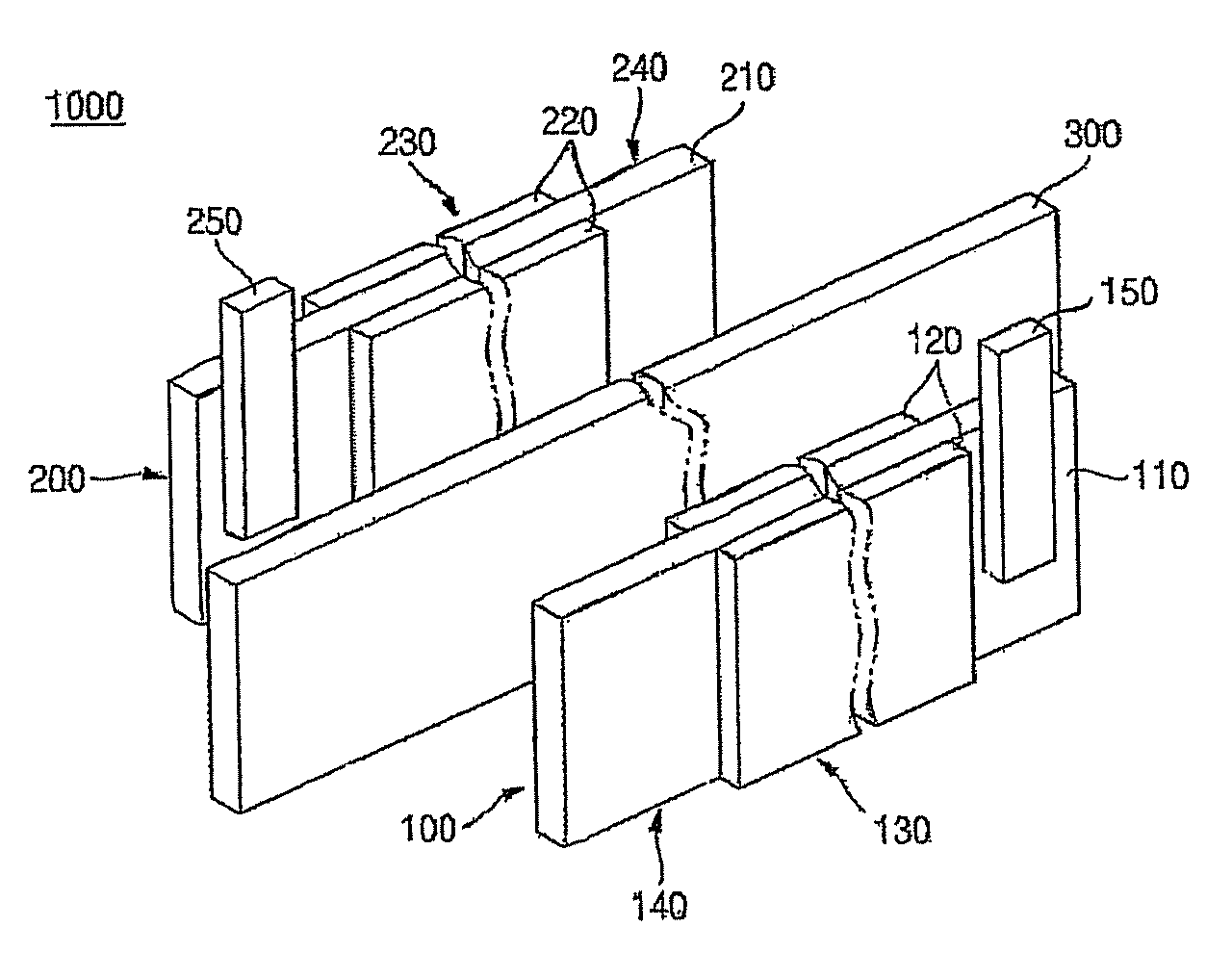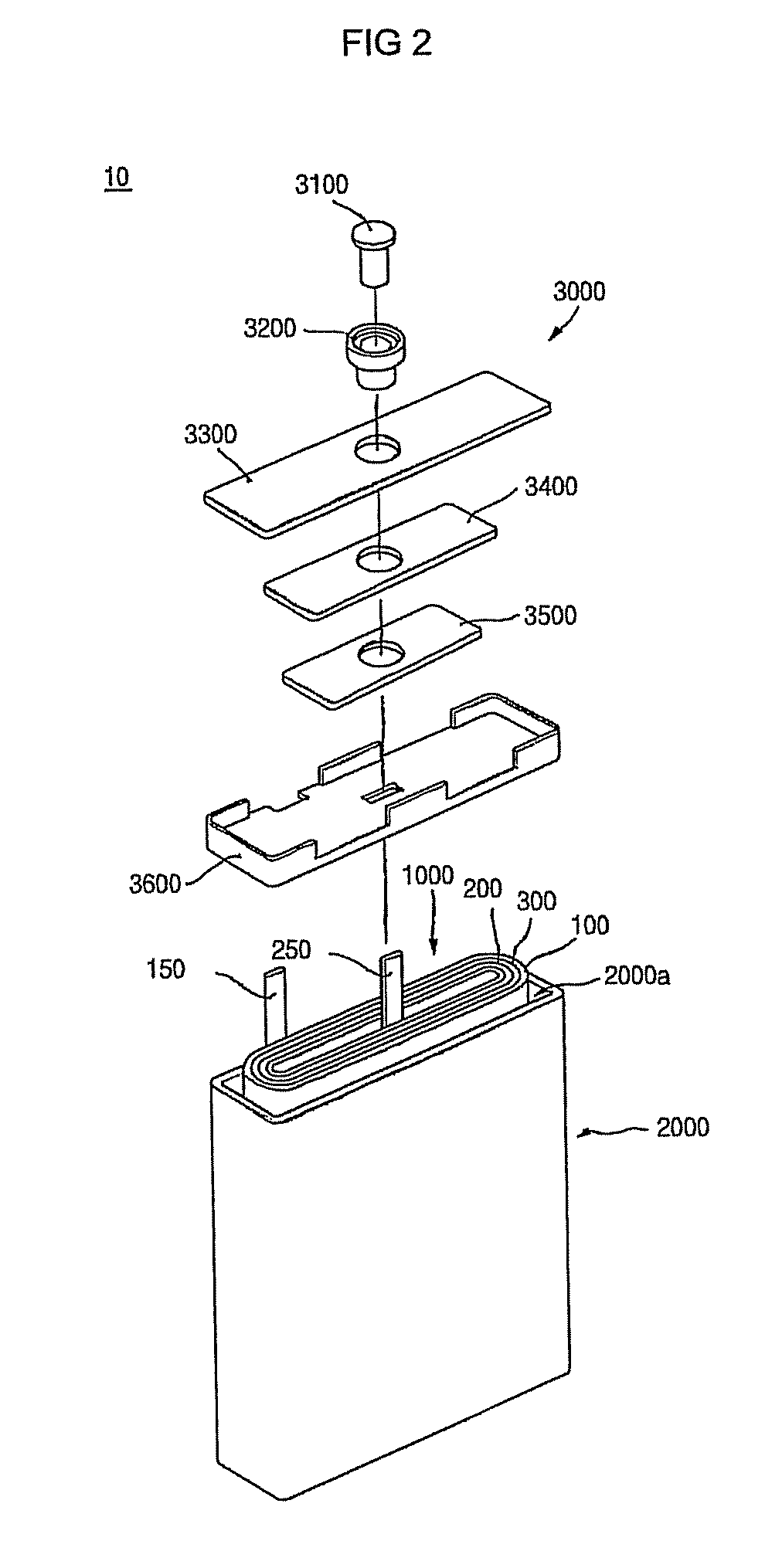Secondary battery
a secondary battery and active material technology, applied in the field of secondary batteries, can solve the problems of reducing battery capacity, lithium nickel oxide exhibits poor initial charge/discharge efficiency, and large initial irreversible capacity, and achieves the effects of reducing the amount of negative electrode active materials, and increasing capacity
- Summary
- Abstract
- Description
- Claims
- Application Information
AI Technical Summary
Benefits of technology
Problems solved by technology
Method used
Image
Examples
example 1
[0044]100 g of CoCO3, having an average particle size of 0.1 to 2 μm, was added to 200 ml of ethanol, to prepare a cobalt-based precursor solution. Nickel hydroxide, manganese hydroxide, and cobalt hydroxide were precipitated at a stoichiometric ratio, by a precipitation method, to prepare [Ni1 / 3Mn1 / 3Co1 / 3]O, which was then stirred into the above ethanol solution. The resultant solution was applied to cobalt-based precursor solution. After the solvent was removed, a CoCO3 powder that was coated with the [Ni1 / 3Mn1 / 3Co1 / 3]O and Li2CO3 were mixed at a molar ratio of 1:1, and the resulting mixture was calcined at 800° C., for 5 hours, under an oxygen atmosphere and then cooled, to thereby prepare an active material. The active material included aggregated particles of the LiCoO2, having a particle size of 0.1 to 2 μm, that were coated with the [Ni1 / 3Mn1 / 3Co1 / 3]O2.
[0045]The active material, a polyvinylidene fluoride binder, and a carbon conductive material (Super P) were dispersed at a w...
PUM
| Property | Measurement | Unit |
|---|---|---|
| average voltage | aaaaa | aaaaa |
| average voltage | aaaaa | aaaaa |
| particle size | aaaaa | aaaaa |
Abstract
Description
Claims
Application Information
 Login to View More
Login to View More - R&D
- Intellectual Property
- Life Sciences
- Materials
- Tech Scout
- Unparalleled Data Quality
- Higher Quality Content
- 60% Fewer Hallucinations
Browse by: Latest US Patents, China's latest patents, Technical Efficacy Thesaurus, Application Domain, Technology Topic, Popular Technical Reports.
© 2025 PatSnap. All rights reserved.Legal|Privacy policy|Modern Slavery Act Transparency Statement|Sitemap|About US| Contact US: help@patsnap.com



